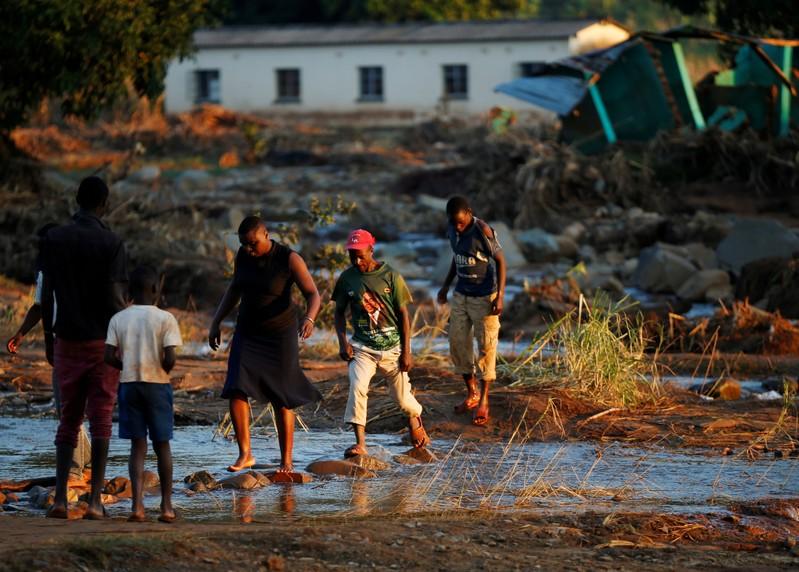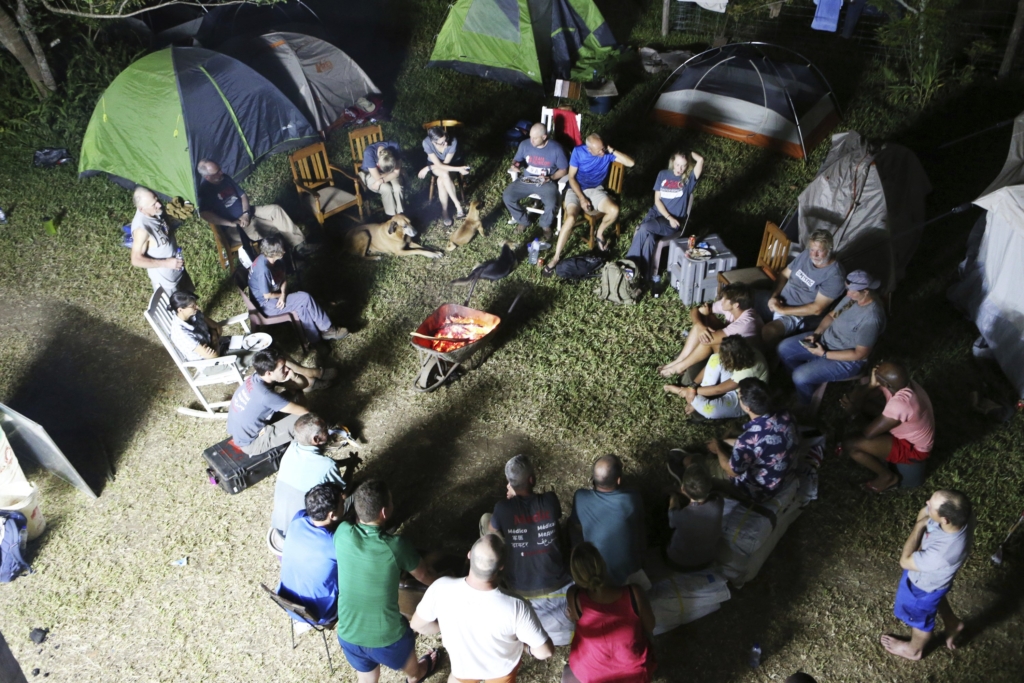Cyclone Idai’s death toll rises to 847, hundreds of thousands displaced – “The harvest for this season is gone, and the chances for next season are minimal at best”

BEIRA, Mozambique, 7 April 2019 (Reuters) – Hundreds of thousands of people are in need of food, water and shelter after Cyclone Idai battered Mozambique, Zimbabwe and Malawi.
As of Sunday, at least 847 people had been reported killed by the storm, the flooding it caused and heavy rains before it hit. Following is an outline of the disaster, according to government and United Nations officials.
MOZAMBIQUE
Cyclone Idai landed on the night of March 14 near the port city of Beira, bringing heavy winds and rains. Two major rivers, the Buzi and the Pungue, burst their banks, submerging entire villages and leaving bodies floating in the water.
- People killed: 602
- People injured: 1,641
- Houses damaged or destroyed: 239,682
- Crops damaged: 715,378 hectares
- People affected: 1.85 million
- Confirmed cholera cases: 2,424
- Confirmed cholera deaths: 5
ZIMBABWE
On March 16 the storm hit eastern Zimbabwe, where it flattened homes and flooded communities in the Chimanimani and Chipinge districts.
- People killed: 185, according to government. The U.N. migration agency puts the death toll at 259.
- People injured: 200
- People displaced: 16,000 households
- People affected: 250,000
MALAWI
Before it arrived, the storm brought heavy rains and flooding to the lower Shire River districts of Chikwawa and Nsanje in Malawi’s south. The rains continued after the storm hit, compounding the misery of tens of thousands of people.
- People killed: 60
- People injured: 672
- People displaced: 19,328 households
- People affected: 868,895
Factbox: Cyclone Idai’s death toll rises to 847, hundreds of thousands displaced

Farmer turns home into makeshift emergency relief centre in Mozambique after Cyclone Idai
By Cara Anna
6 April 2019
(AP) – It began with a farmer who wanted to see how his neighbours had weathered a deadly cyclone. It has turned into an extraordinary grassroots relief operation that has helped thousands in rural Mozambique.
Helicopters land in the farmhouse’s driveway. Aid workers in matching T-shirts sleep in tents in the front yard and on the roof. Hundreds of local subsistence farmers whose lives were swept away by the floods drop by to collect the food and supplies to start again.
“We’ve been at it for … three weeks? I’ve lost track of time,” the farmhouse’s sole resident in normal times, said mango farmer Gilles van de Wall, after another frenetic day.
Potluck reigns. Visitors bring beer and bottled water to stock a straining refrigerator. Dogs, at least one cat and a caged grey parrot have adapted to the crowd. New people arriving? Just budge over.
“Prepare to be utterly disappointed,” one recent night’s impromptu cook for the crowd of volunteers declared.
Cyclone Idai hit this part of rural Mozambique particularly hard, with torrential rains draining down from the nearby mountains that separate the country from Zimbabwe. Rivers burst their banks leaving corn stalks hanging from electrical wires.
The floodwaters made the farmhouse and surrounding buildings an island. Even before the waters drained, Mr Van de Wall began a rescue operation for families nearby, “then a much wider area,” he said. Soon, some 600 people were sheltering at the farm. Then 1,000. […]
“If you’re the first people to reach them, it’s indescribable,” Mr Van de Wall said of the desperation of families surrounded by flooded fields. […]
“Everything was washed away,” one waiting woman, Rosita Cuanda, said. “The goats, the chickens, the house. We were left with nothing.” [more]
Farmer turns home into makeshift emergency relief centre in Mozambique

Cyclone Idai threat to food security, health in Southern Africa
By Margaret Besheer
2 April 2019
UNITED NATIONS (VOA) – As the flood waters recede in cyclone-hit southern Africa, officials are starting to assess medium- and longer-term requirements, including food security, health needs and improving disaster preparedness.
“For 2019, food security is going to be a serious, serious issue,” World Food Program Executive Director David Beasley told a U.N. meeting about Cyclone Idai on Tuesday.
Beasley, who addressed the session via a video link, noted “the crops in these areas, particularly in Mozambique, are just gone. So, the harvest for this season is gone, and the chances for next season are minimal at best.”
“Hundreds of thousands of hectares of agricultural land have been essentially put out of use in the short term,” U.N. humanitarian chief Mark Lowcock said. “There is now only two or three weeks to prepare for the small harvest and to plant for the small harvest. So, there is an urgent need for seeds and tools and fertilizers to at least rescue the potential for the small harvest later in the year.”
Cyclone Idai slammed into Mozambique, Malawi and Zimbabwe in mid-March bringing powerful winds, major rains and storm surge flooding. Nearly 900 people have been confirmed dead across the three countries, while many more are missing, and hope is fading for them to be found alive.
“The waters into which they were lost are waters infested with crocodiles. They are waters infested with hippos, and they may never be found,” Zimbabwe’s U.N. Ambassador Frederick Shava said of the missing.
Even before Idai wreaked havoc, parts of this region faced food insecurity. Inconsistent rains combined with an economic crisis had 5.3 million people in Zimbabwe in humanitarian need. Now, the U.N. says an additional 270,000 people require assistance.
Malawi, one of the poorest countries in the world, was facing a lean season pre-cyclone, and more than 3 million people were at risk for crisis or emergency levels of food insecurity.
Then Idai came and washed away crops that were just about to be harvested.
“Food will be needed not only in the short run, but going forward,” said Malawi Ambassador Perks Master Clemency Ligoya.
“Commodity prices for the existing food stuffs have already increased by close to 50 percent,” he noted.
Then there are the health issues. Cholera cases have already topped 1,000, as flood waters spread contamination. Malaria is also expected to rise as flood waters provide breeding grounds for mosquitos, which spread the disease. [more]
Cyclone Idai Threat to Food Security, Health in Southern Africa